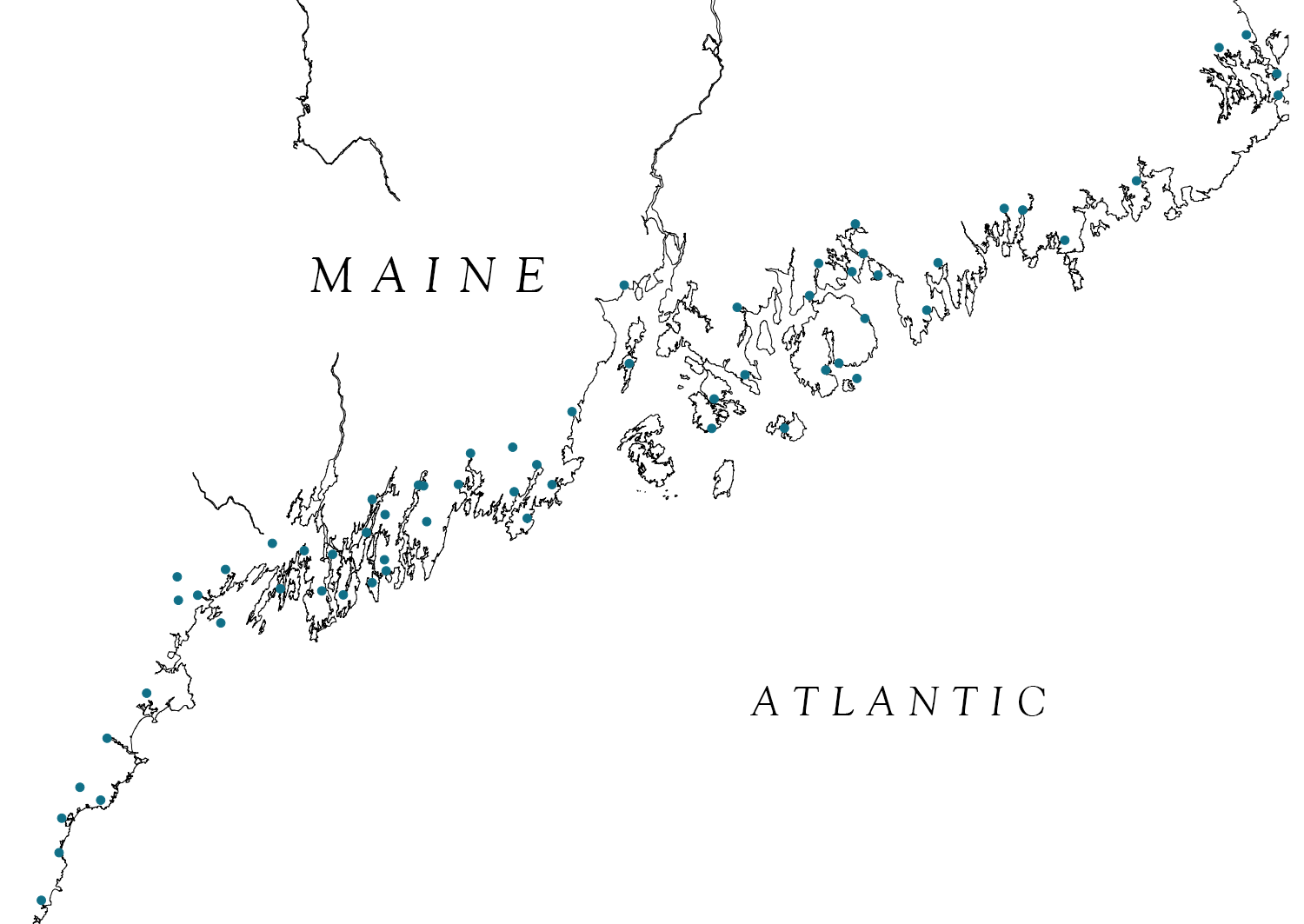Shellfish
 A blue mussel on the beach at Lamoine State Park, Lamoine, ME.
A blue mussel on the beach at Lamoine State Park, Lamoine, ME.
Shellfish Harvest
A primary focus of NEST's first project on Safe Beaches and Shellfish is the people who harvest shellfish. According to The Maine Clam Handbook, "soft-shell clams are among Maine's most valuable commercial fisheries species." The Handbook details a rich history of clamming in the state during the 20th century, as well as the challenges.
During NEST's first project, the industry faced several threats to its resource. The New Hampshire Fish and Game Department identified water pollution as one of these primary issues. Other threats include invasive species, climate change, and ocean acidification, while issues like land access and competitive use of harvesting areas can lead to conflicts between people who live and work near clam flats. NEST focuses on providing solutions to sustainability issues, so it's important to understand the work of clam harvesters.
To get an up-close perspective of what harvesting can look like in the actual boots of a Maine clam digger, watch the video below. It uses special recording techniques to give you the sense of being there on the clam flat. This effect works best if you listen with earphones while you watch.
This is the exact location where the harvest happened. Notice that the tide is higher in the satellite image. The video was taken at low tide, when clammers do their work. Clams settle in the space between high and low tides, known as the intertidal. This means clammers are digging in ground that has been underwater for most of the day.
This image shows the towns in Maine that currently choose to govern shellfish harvesting in their area. Towns that do not appear on the list either don't have shellfish resources or haven't chosen to manage the resources they do have. In that case shellfish harvesting is determined by less stringent state law.
Traditional Ecological Knowledge
NEST is deeply interested in the ways that coastal communities with local knowledge have incredibly valuable perspectives and knowledge about environmental systems. However, many environmental research projects tend to overlook the important contributions of such perspectives, particularly Traditional Ecological Knowledge (TEK). TEK is a phrase for the way Native American communities approach issues of sustainability and environmental participation. TEK is intergenerational knowledge that refers to the combined practices, beliefs, and observations of native communities and the key insights that these forms of knowledge generate.
Fred Moore, chief of the Pleasant Point Reservation in Eastport, Maine, sees shellfish (through the traditional knowledge of his people) as living creatures worthy of respect. While Moore himself is a fisherman (like his ancestors and his descendants), he doesn't see his participation in the fishing industry as a contradiction. Instead, he explains that his attentiveness and respect of the animals he harvests promotes sustainability. All living things must eat, and as part of an ecological system, he understands that even though he is using other creatures, he is doing so in a way that honors their contribution.
Natalie Michelle is a Passamaquoddy and Penobscot native, and a University of Maine doctoral student on NEST studying ethnobotany and adaptive practices. She also knows Moore well and shares his perspective on environmental matters. Michelle says that native communities have valuable historical knowledge and that they are able to uniquely contribute in important ways to the environmental study of beaches and shellfish. "Contemporary society is more geared towards individual gain, what I call the 'I' hypothesis," Michelle said, "whereas the native community is geared more around values of 'we' relationship within community, a collective approach to managing not only family and community but the environment." And while Moore is interested in sharing ecological knowledge within native communities, Michelle wants TEK to be a well-respected component of science and decision-making in sustainability projects like NEST. "TEK is not only current but it's dynamic and it's evolving...and I think it's really important that indigenous communities are included in the decision-making process and are an active part. I think that both science and the native communities have a lot to learn from each other," Michelle said.
